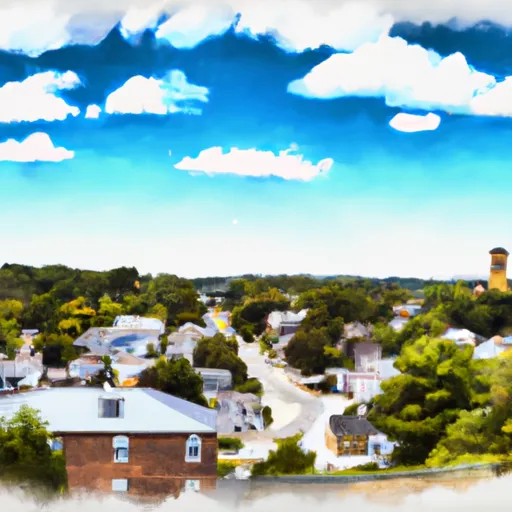-
 Snoflo Premium
Snoflo Premium
Get unlimited access to all our content
With no Ad interruptions! - Start Your Free Trial Login with existing account
Stow
Eden Index
Climate
9.2
•
Recreation
5.0
•
Community
6.7
•
Safeguard
7.1/10

Stow, Massachusetts is a charming town located in Middlesex County, about 25 miles west of Boston. The town experiences a humid continental climate, characterized by warm summers and cold winters. Summers in Stow are generally pleasant, with temperatures averaging in the mid-70s°F, while winters can be harsh, with temperatures dipping below freezing and ample snowfall.
Hydrologically, Stow is home to several small lakes and ponds, including Lake Boon and Lower Village Pond. These water bodies offer opportunities for fishing, boating, and swimming during the summer months. Additionally, the Assabet River Wildlife Refuge runs through Stow, providing scenic trails for hiking and birdwatching.
Outdoor enthusiasts will find plenty of recreational opportunities in Stow. The town boasts numerous parks and conservation areas, such as the Delaney Project, Hale Conservation Area, and Whitney Field, offering trails for walking, biking, and picnicking. Stow also has a golf course and several sports fields for various outdoor activities.
Overall, Stow, Massachusetts offers a delightful climate, beautiful water features, and ample opportunities for outdoor recreation, making it an attractive destination for nature lovers and adventurers alike.
What is the Eden Index?
The Snoflo Eden Index serves as a comprehensive rating system for regions, evaluating their desirability through a holistic assessment of climate health, outdoor recreation opportunities, and natural disaster risk, acknowledging the profound impact of these factors on livability and well-being.
Climate Health Indicator (CHI): 9.2
Stow receives approximately
1065mm of rain per year,
with humidity levels near 72%
and air temperatures averaging around
9°C.
Stow has a plant hardyness factor of
6, meaning
plants and agriculture in this region thrive during a short period during spring and early summer. Most
plants will die off during the colder winter months.
By considering the ideal temperature range, reliable water supplies, clean air, and stable seasonal rain or snowpacks, the Climate Health Indicator (CHI) underscores the significance of a healthy climate as the foundation for quality living.
A healthy climate is paramount for ensuring a high quality of life and livability in a region, fostering both physical well-being and environmental harmony. This can be characterized by ideal temperatures, reliable access to water supplies, clean air, and consistent seasonal rain or snowpacks.
Weather Forecast
Streamflow Conditions
Merrimack
Area Rivers
Merrimack
Snowpack Depths
Merrimack
Reservoir Storage Capacity
Merrimack
Groundwater Levels
Recreational Opportunity Index (ROI): 5.0
The Recreational Opportunity Index (ROI) recognizes the value of outdoor recreational options, such as parks, hiking trails, camping sites, and fishing spots, while acknowledging that climate plays a pivotal role in ensuring the comfort and consistency of these experiences.
Access to outdoor recreational opportunities, encompassing activities such as parks, hiking, camping, and fishing, is crucial for overall well-being, and the climate plays a pivotal role in enabling and enhancing these experiences, ensuring that individuals can engage in nature-based activities comfortably and consistently.
Nearby Ski Areas
Catastrophe Safeguard Index (CSI):
The Catastrophe Safeguard Index (CSI) recognizes that natural disaster risk, encompassing floods, fires, hurricanes, and tornadoes, can drastically affect safety and the overall appeal of an area.
The level of natural disaster risk in a region significantly affects safety and the overall livability, with climate change amplifying these risks by potentially increasing the frequency and intensity of events like floods, fires, hurricanes, and tornadoes, thereby posing substantial challenges to community resilience and well-being.
Community Resilience Indicator (CRI): 6.7
The Community Resilience Indicator (CRI) recognizes that education, healthcare, and socioeconomics are crucial to the well-being of a region. The CRI acknowledges the profound impact of these elements on residents' overall quality of life. By evaluating educational resources, healthcare accessibility, and economic inclusivity, the index captures the essential aspects that contribute to a thriving community, fostering resident satisfaction, equity, and social cohesion.

